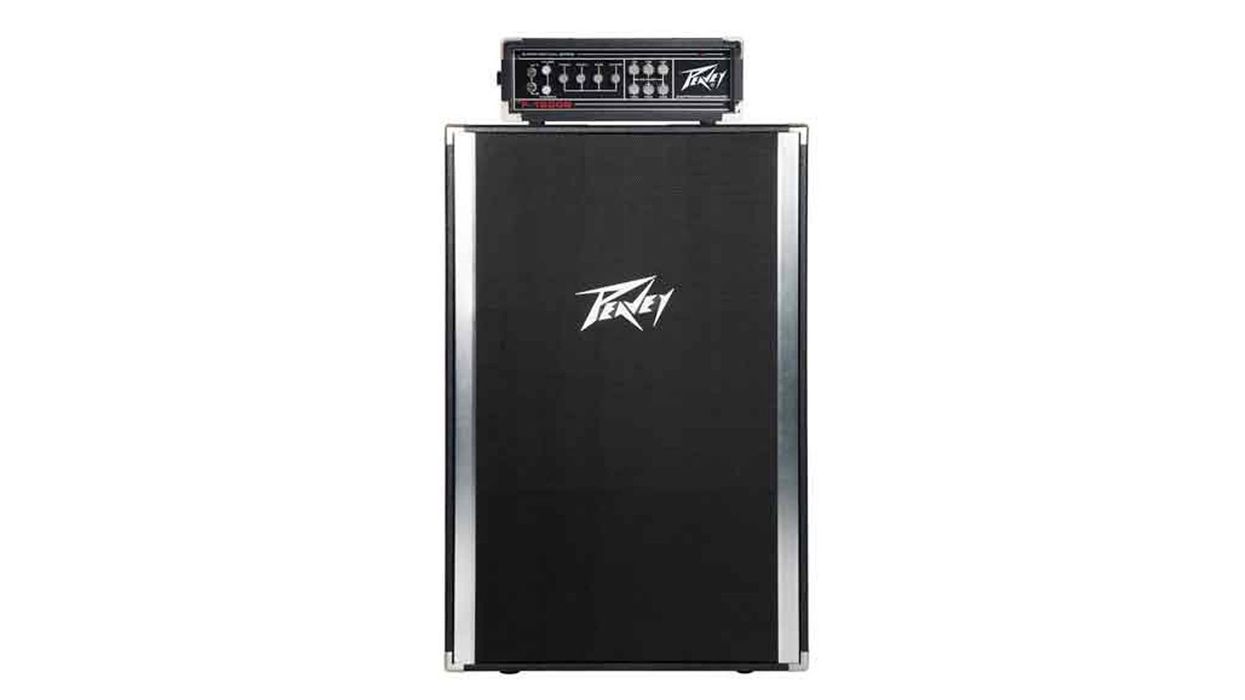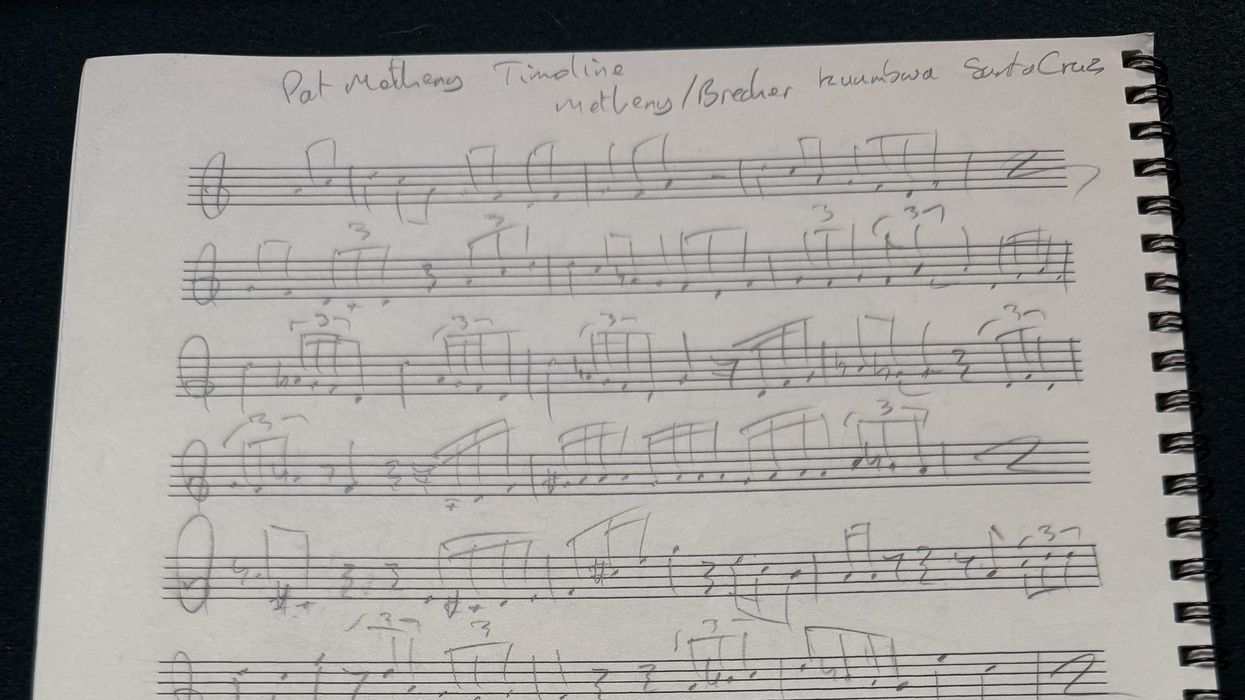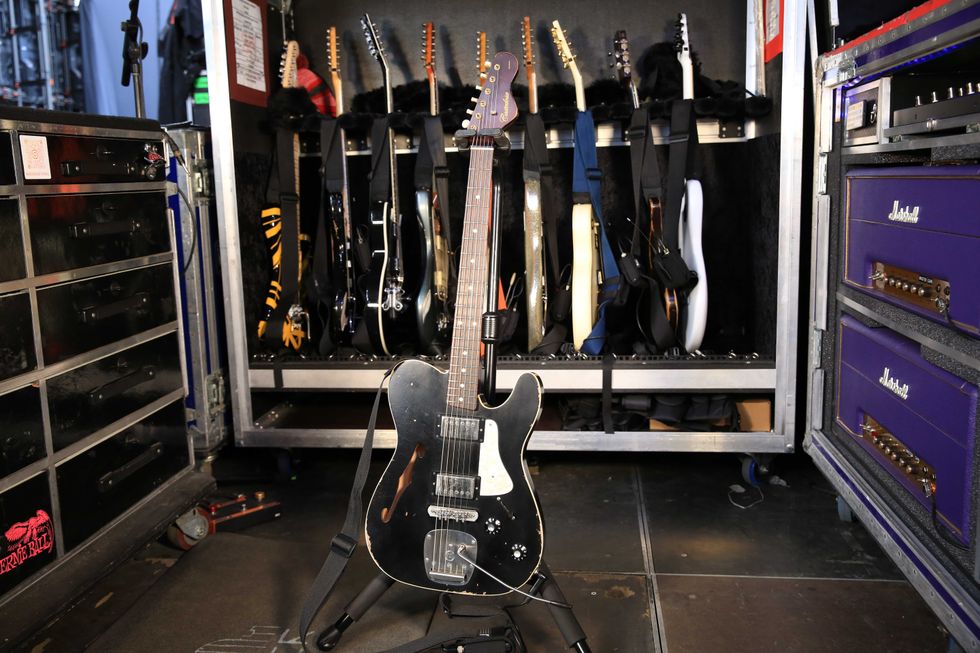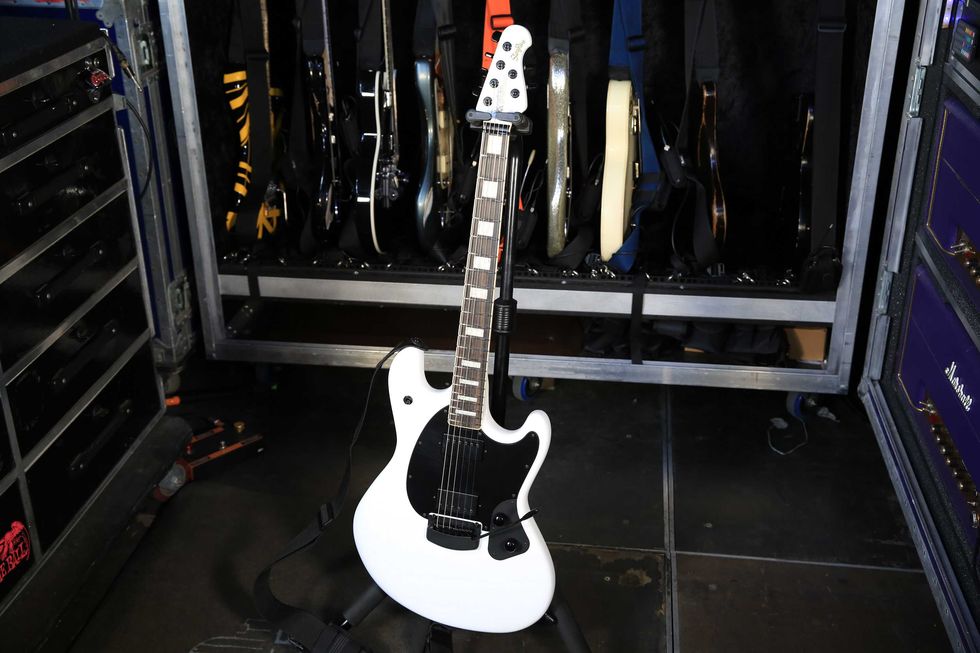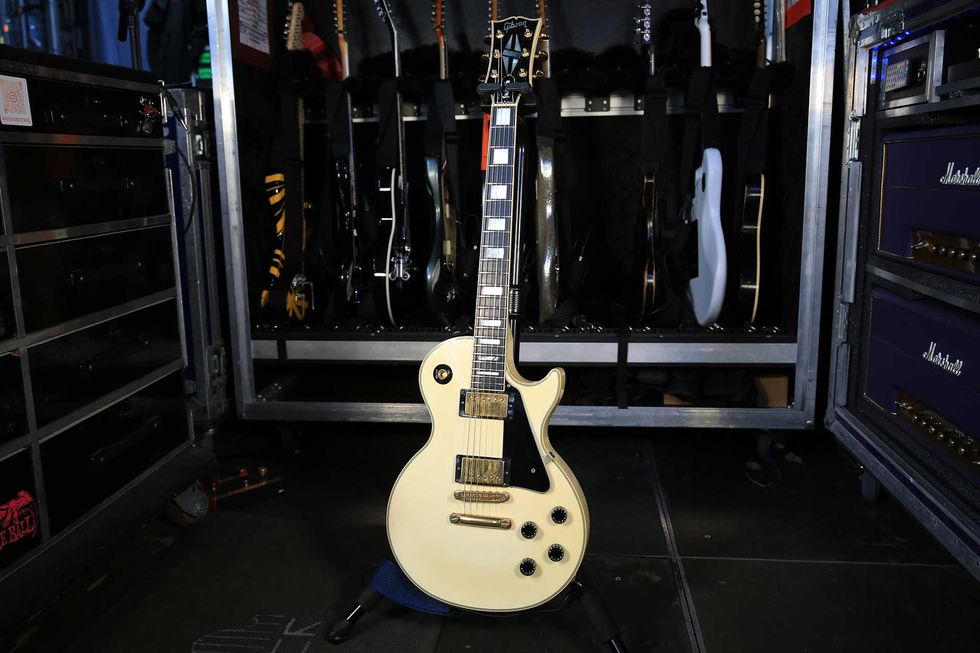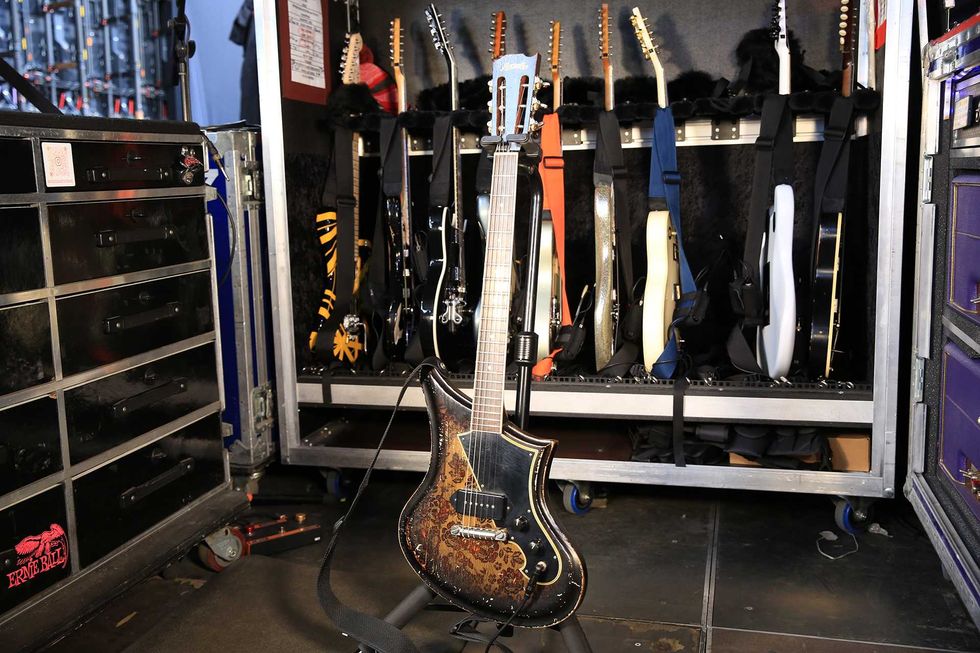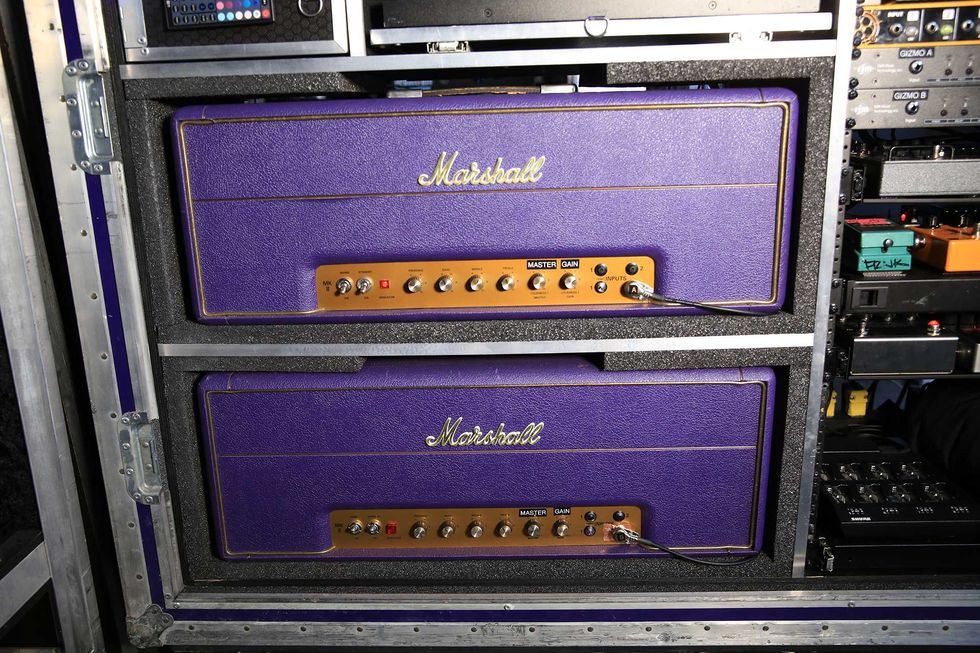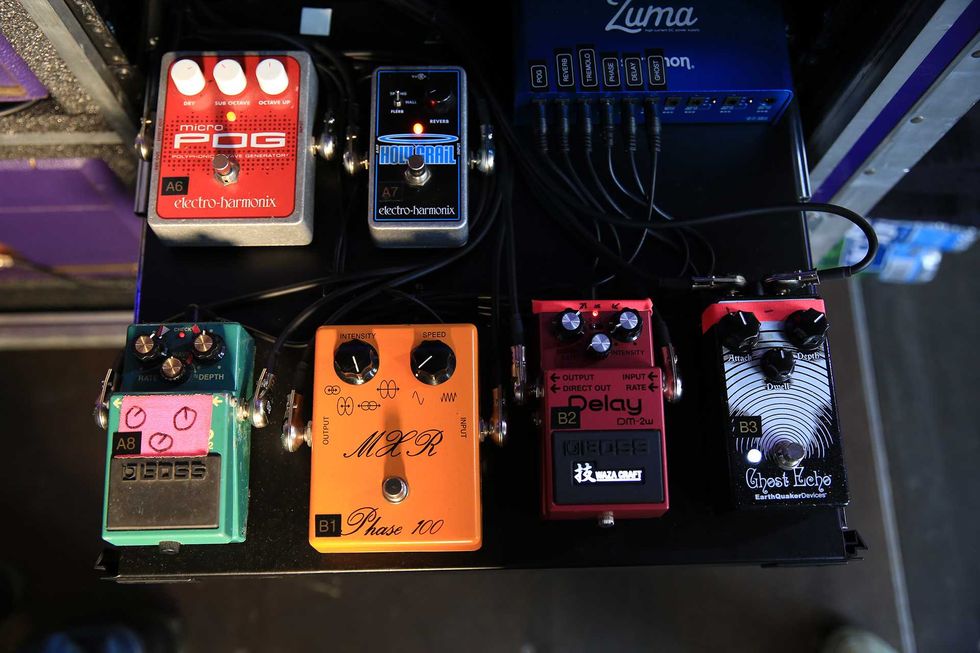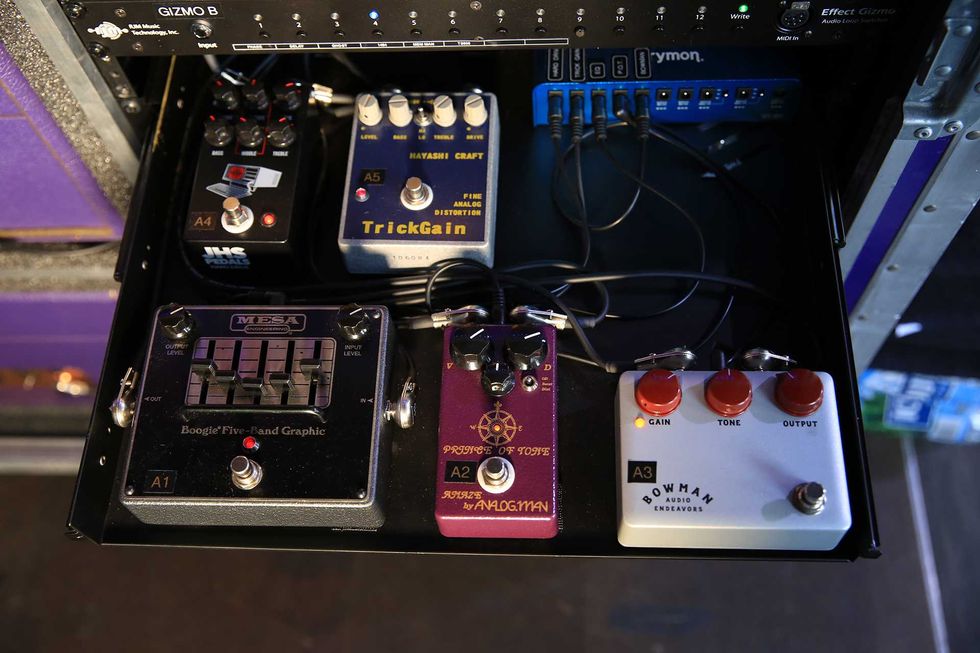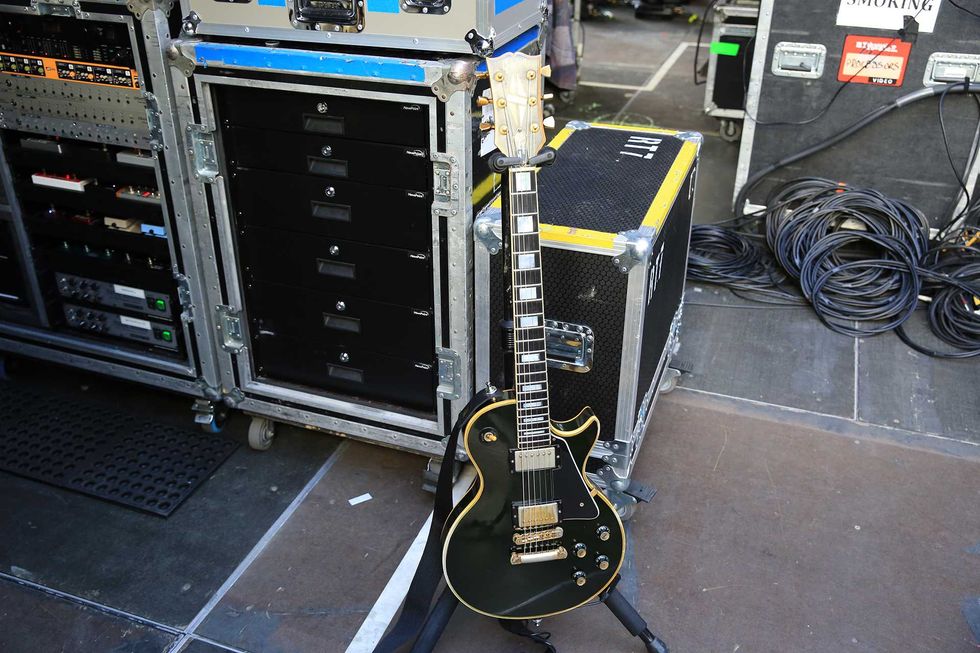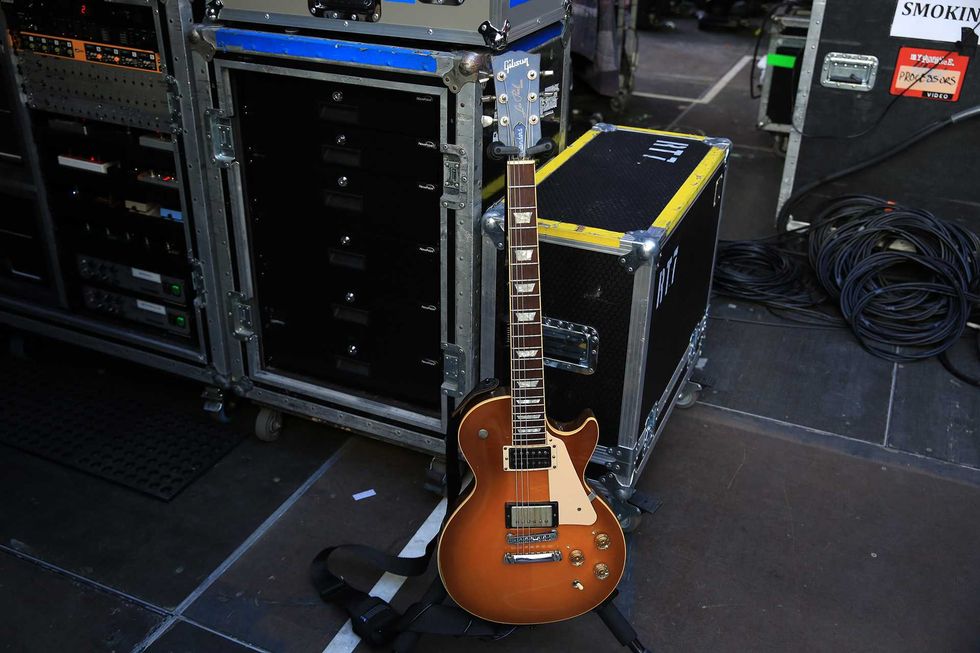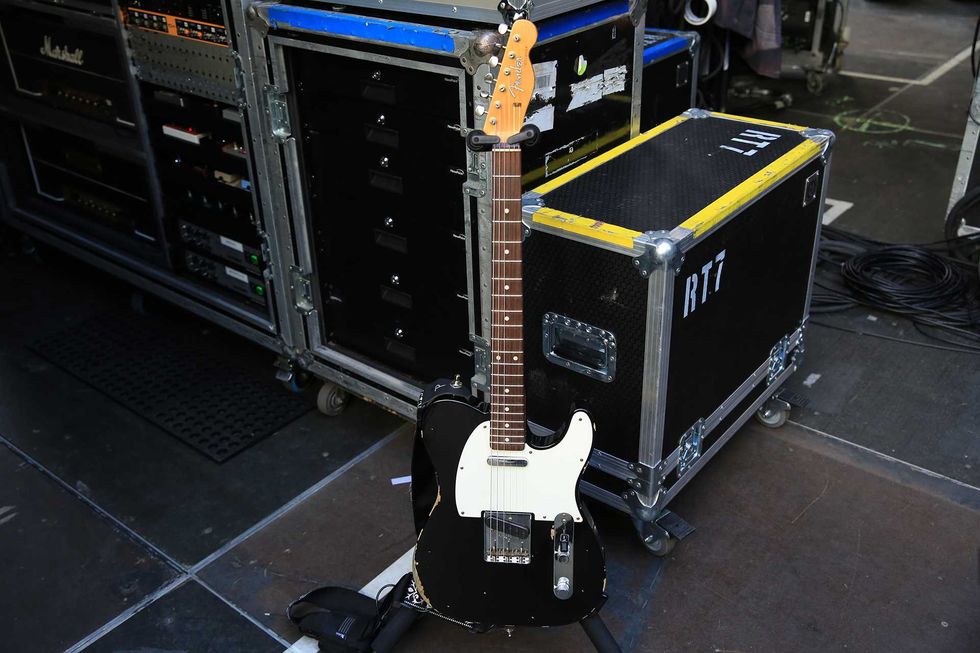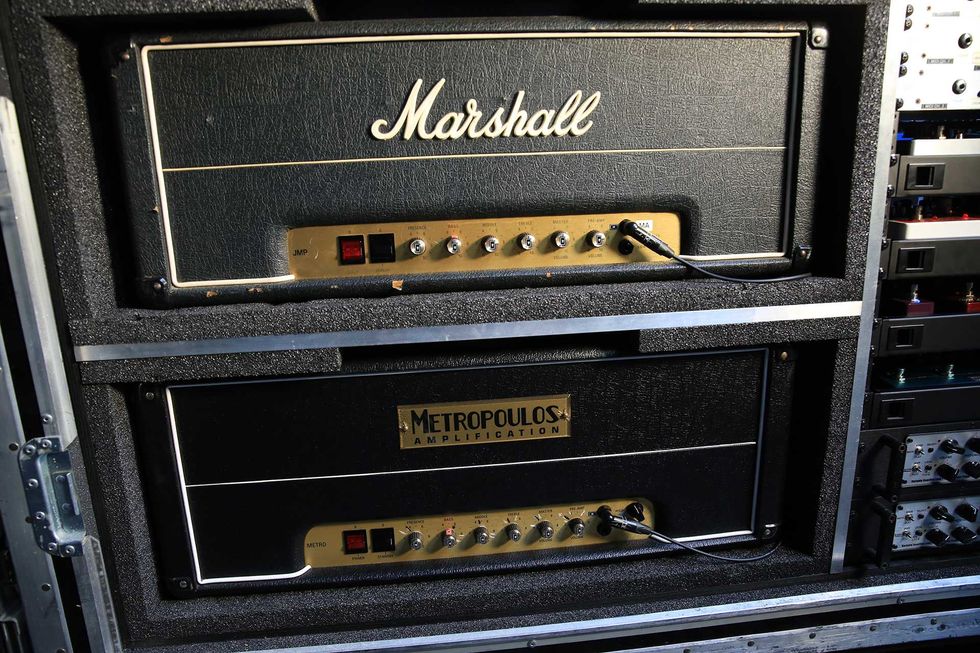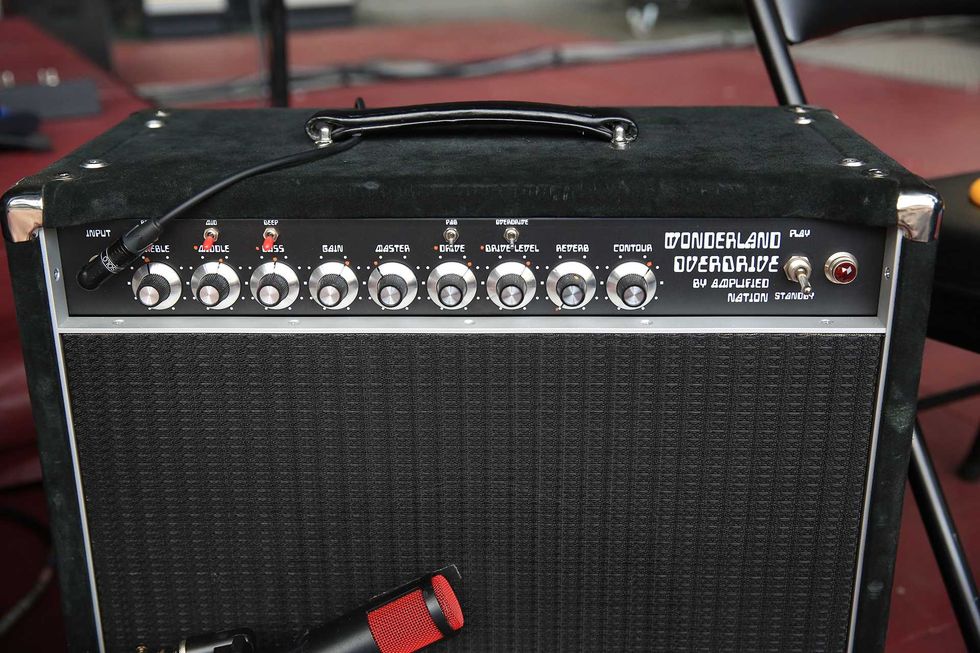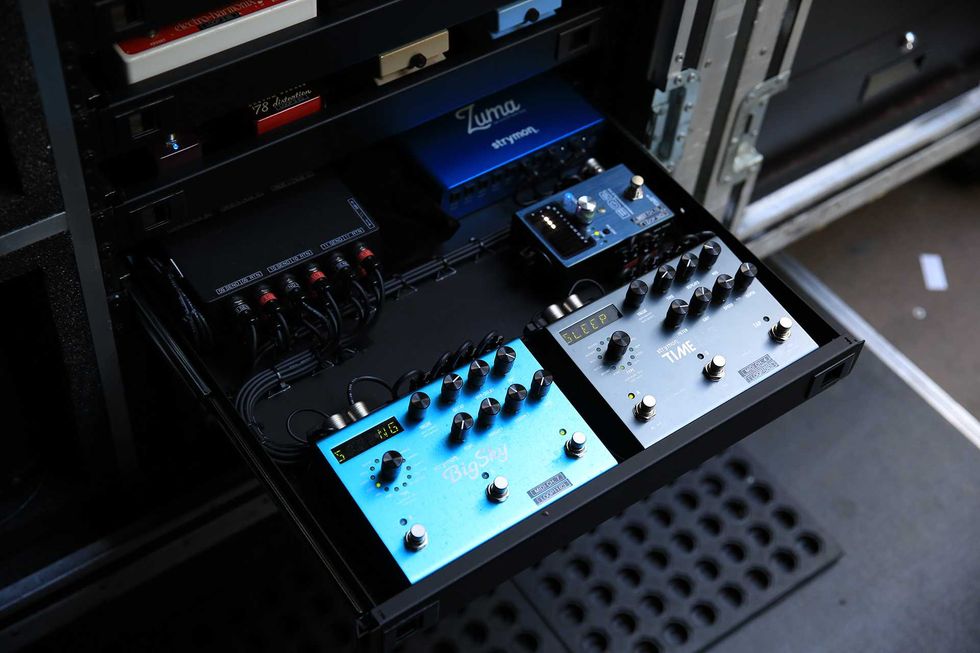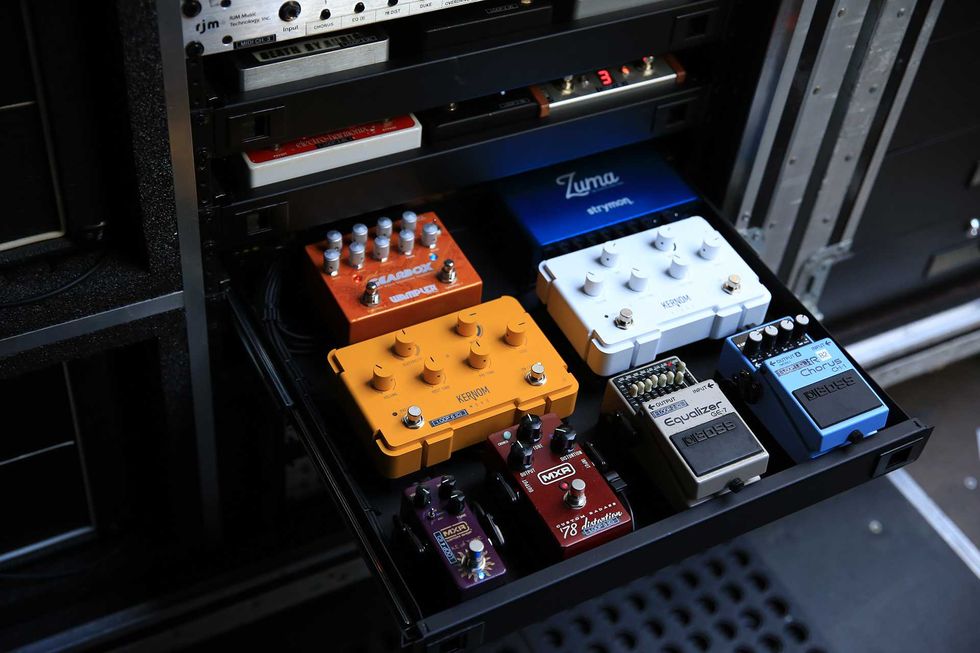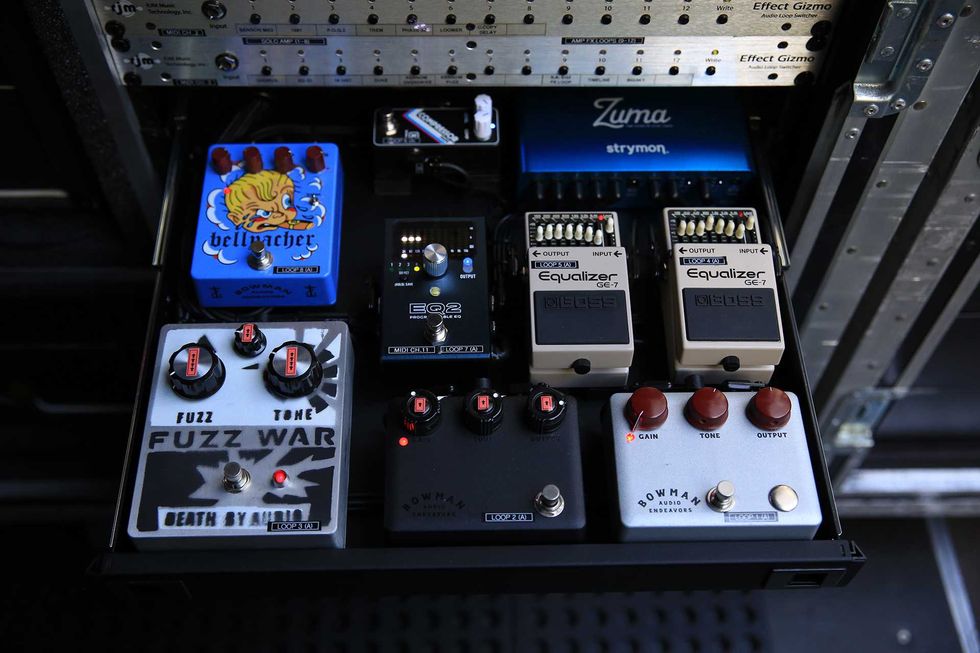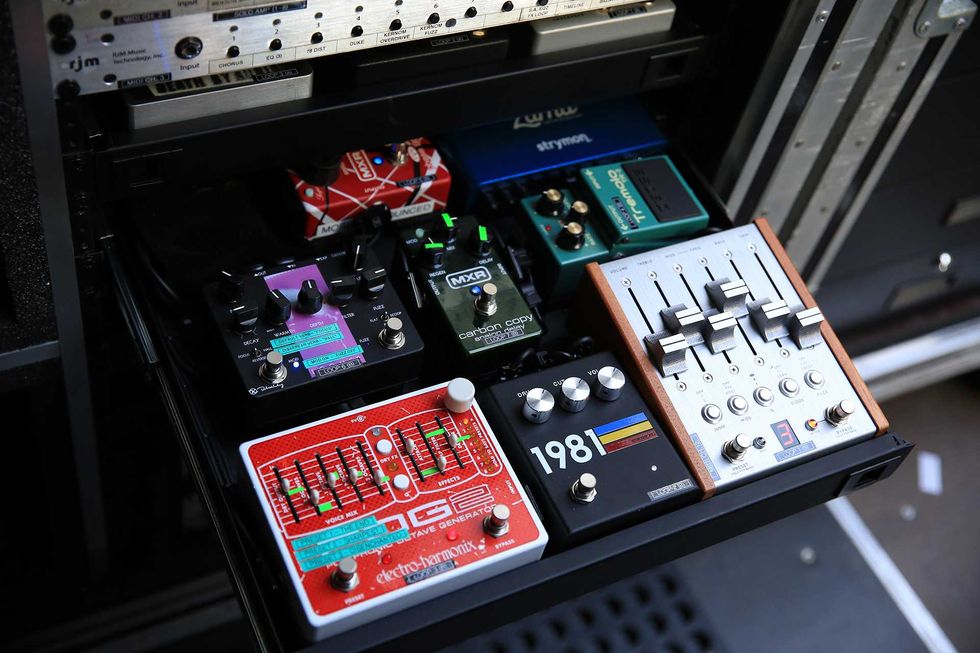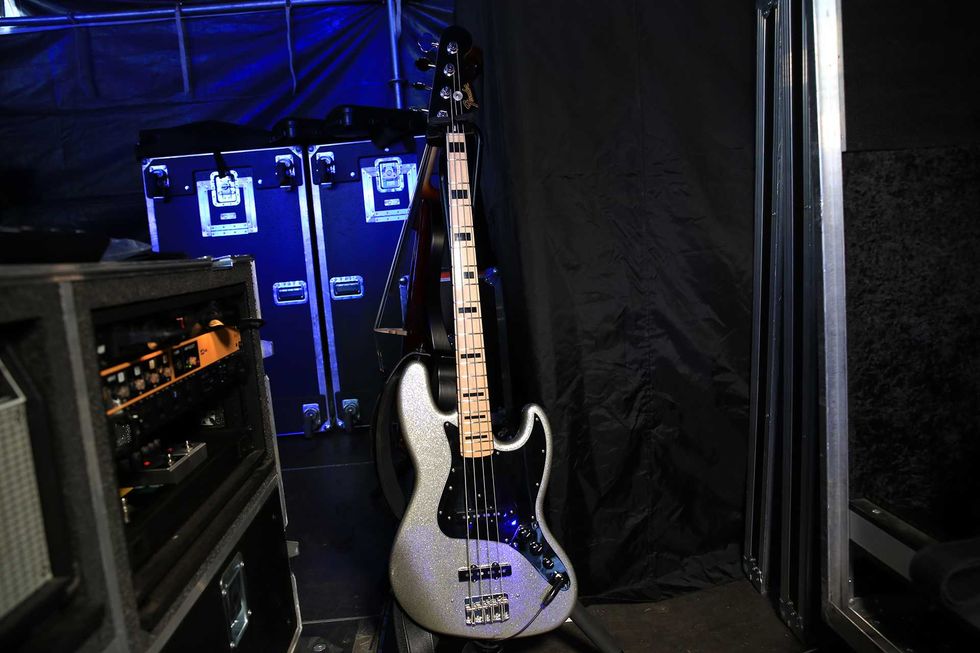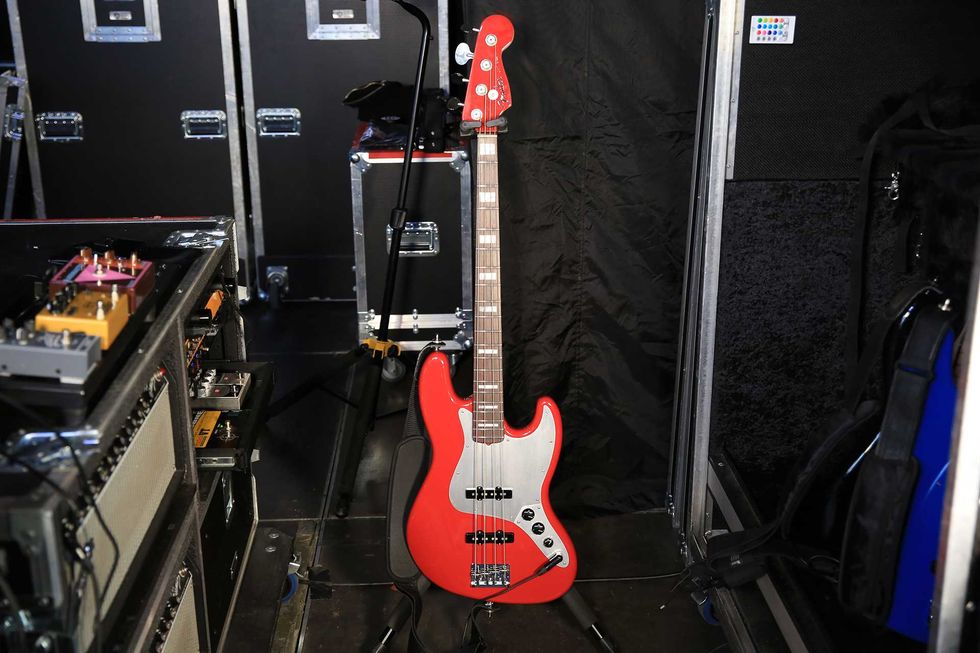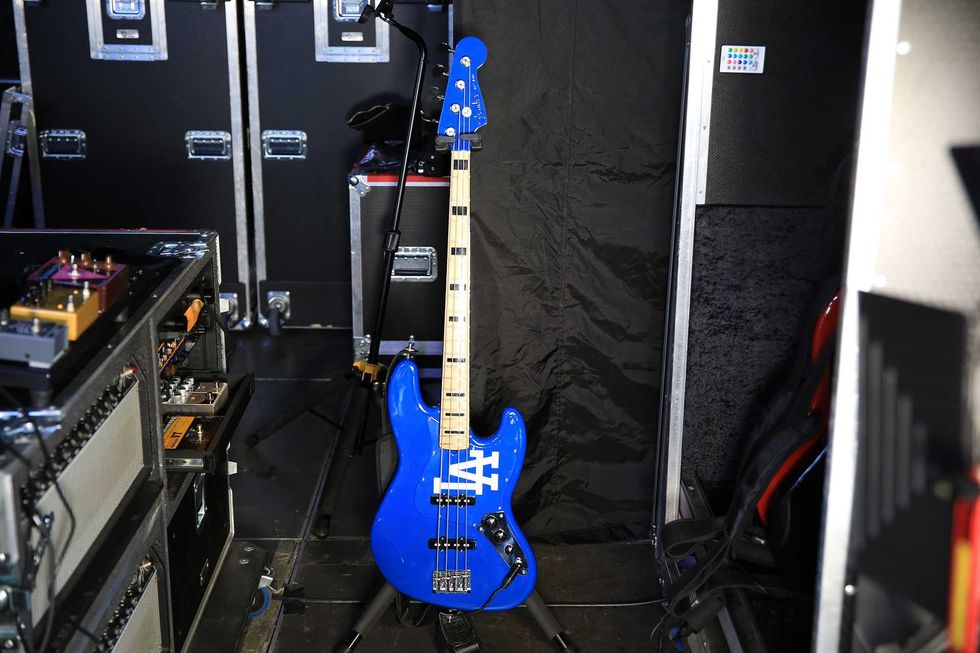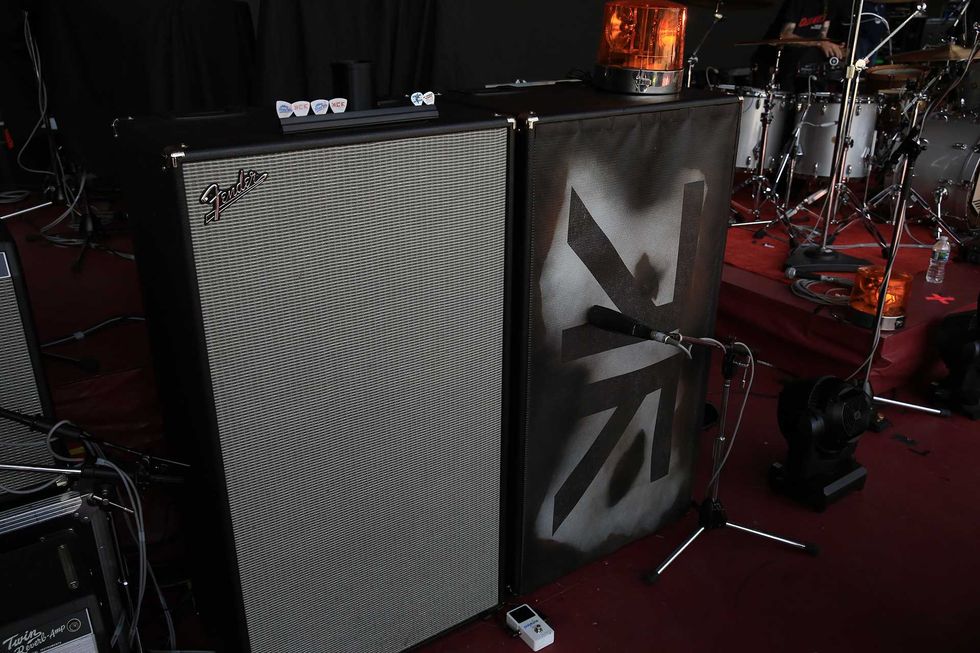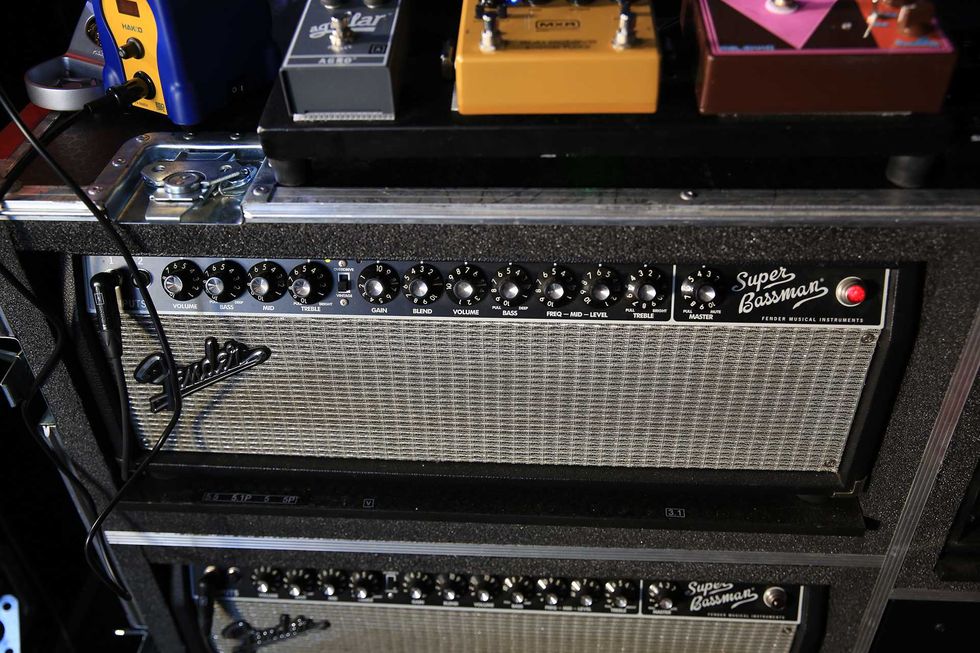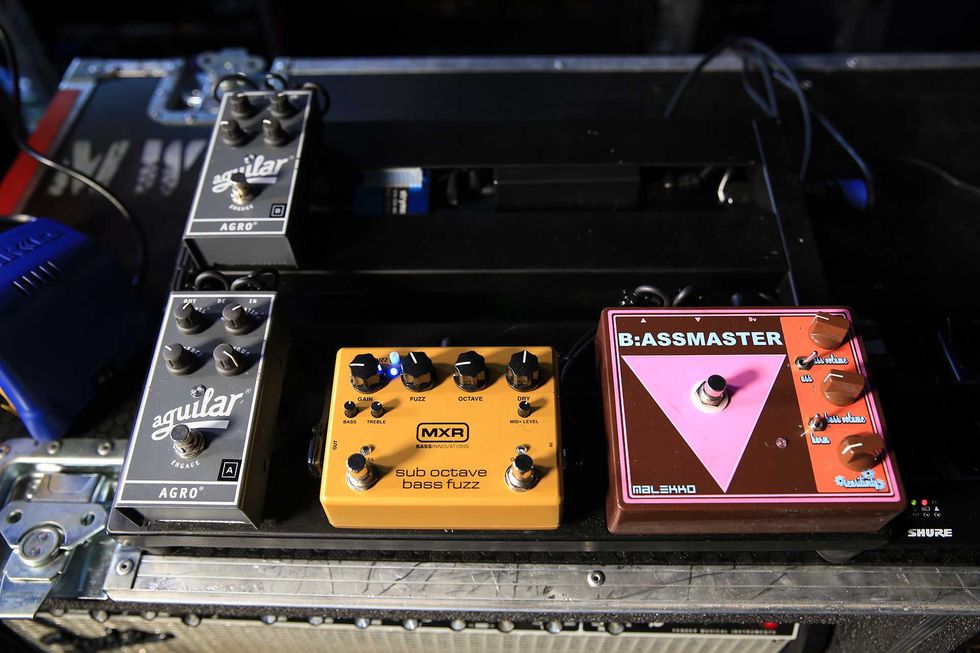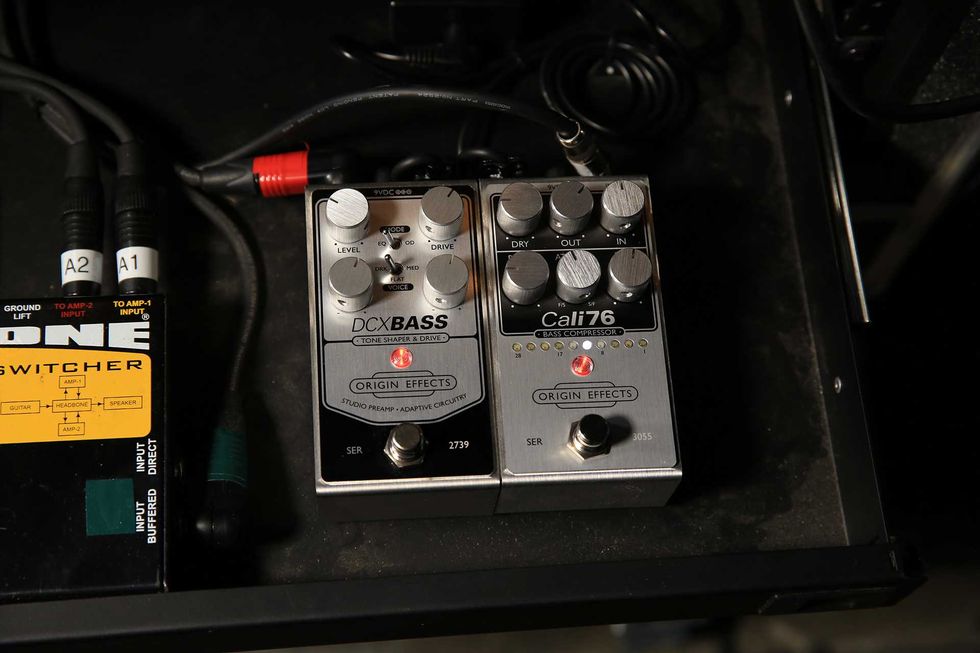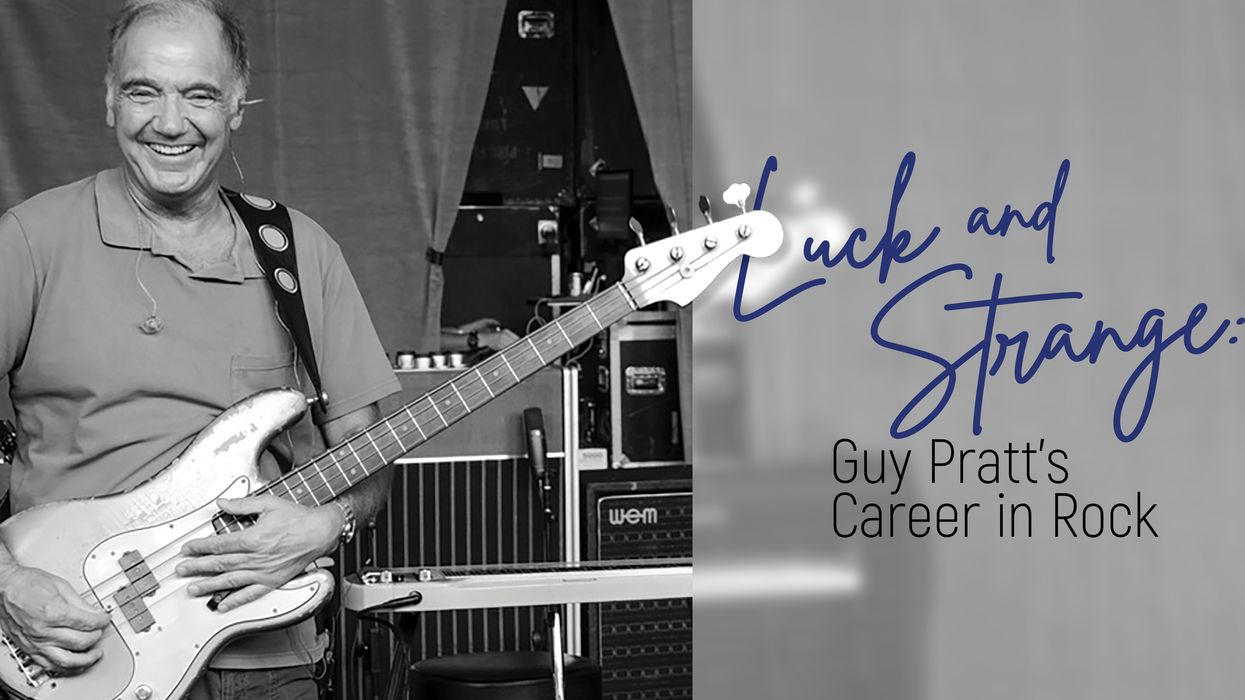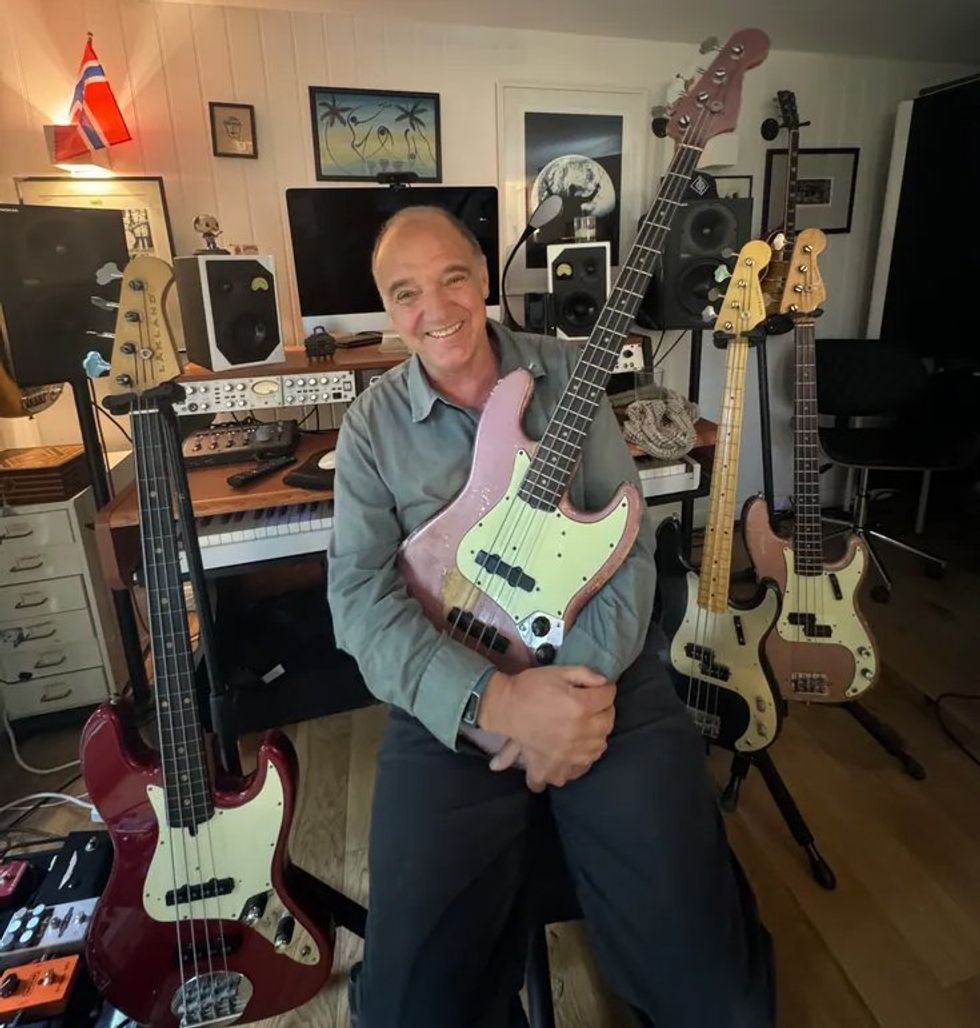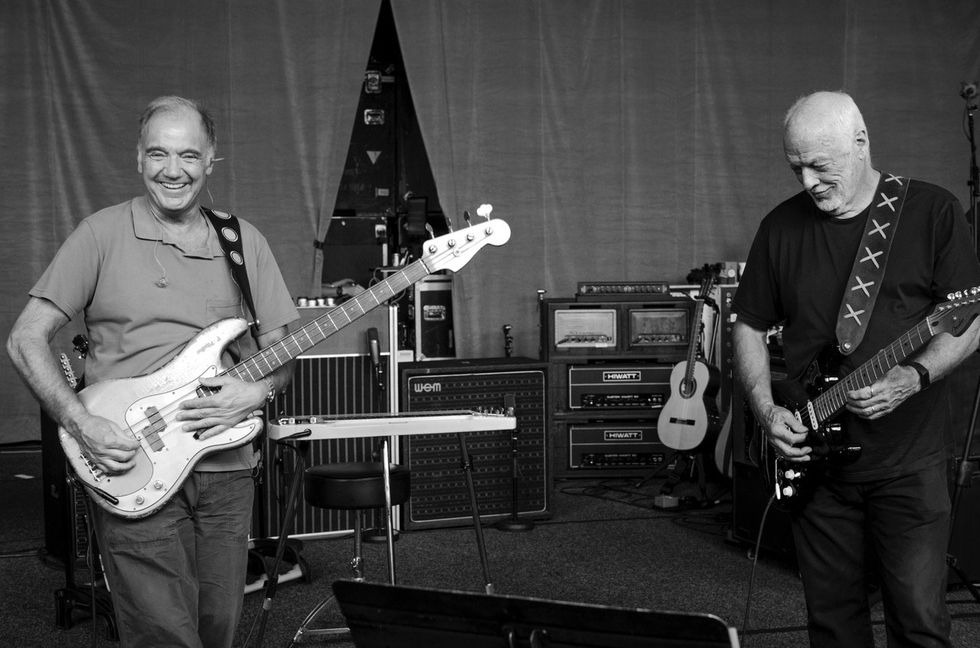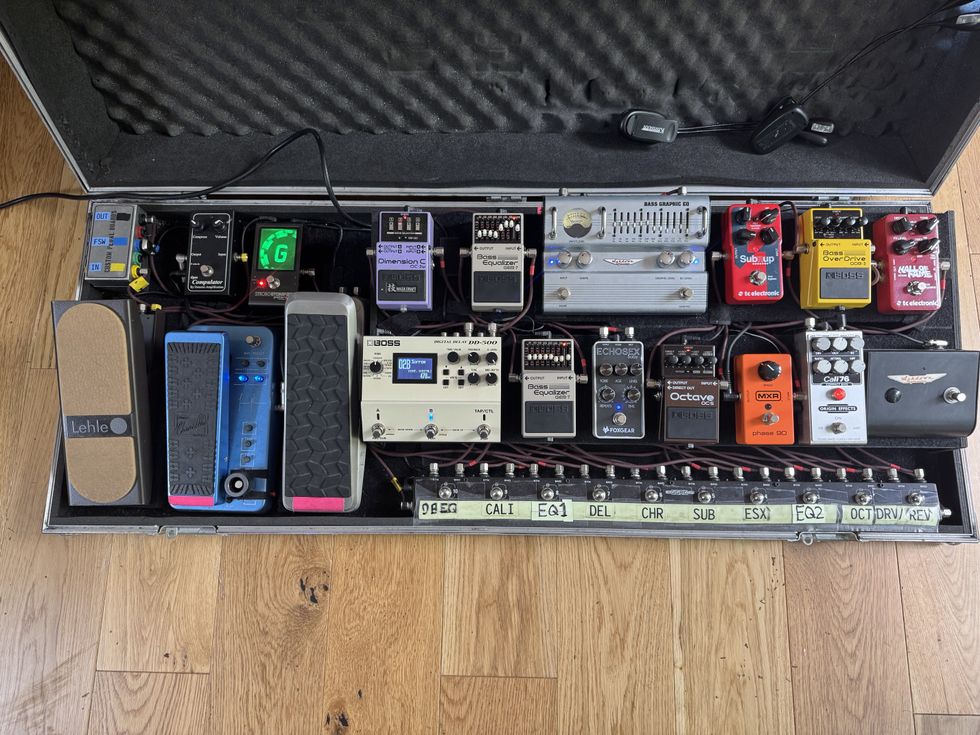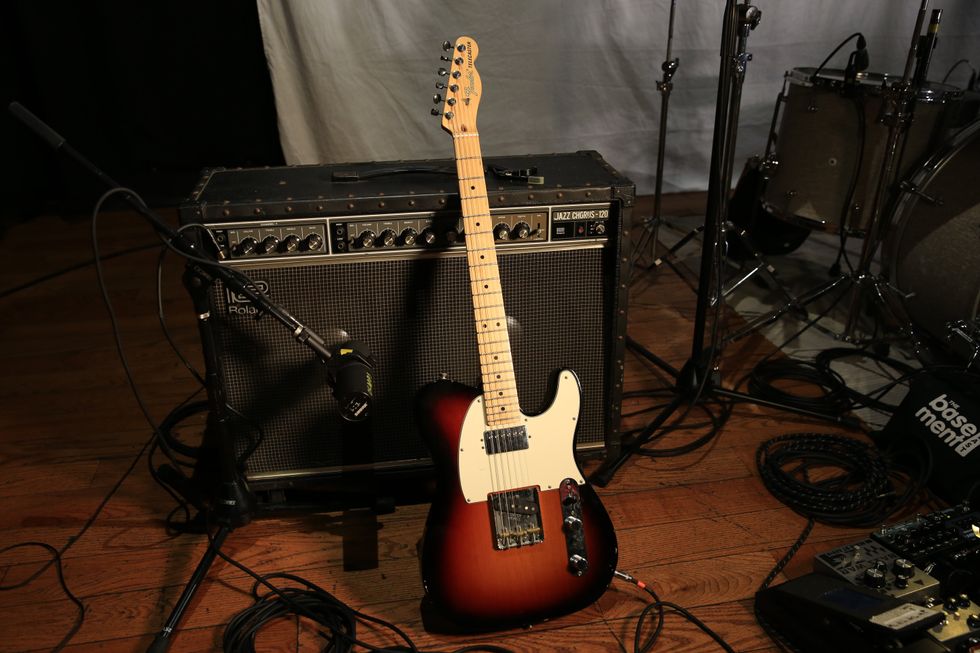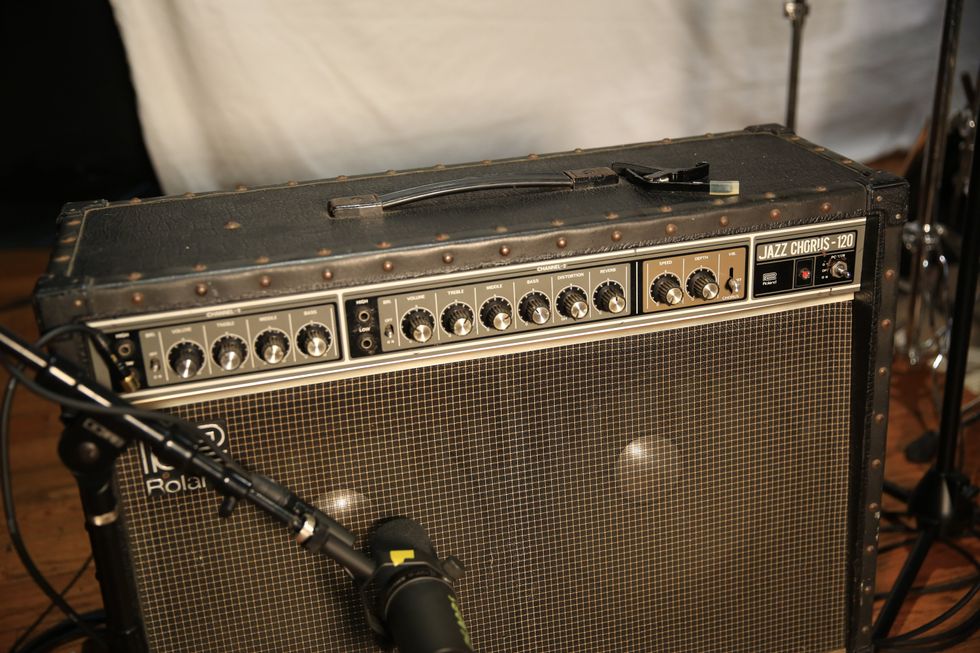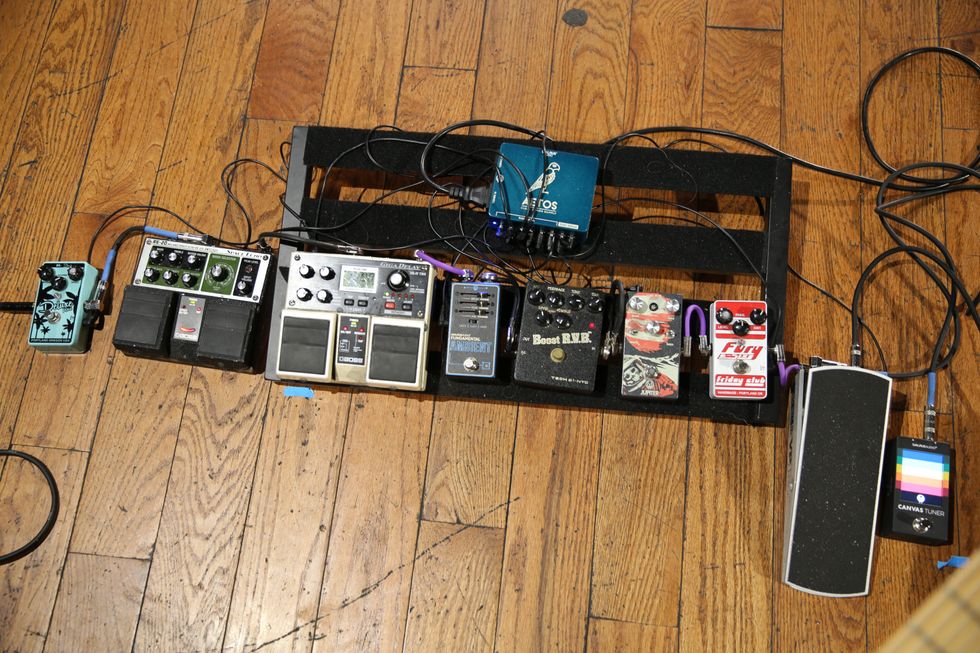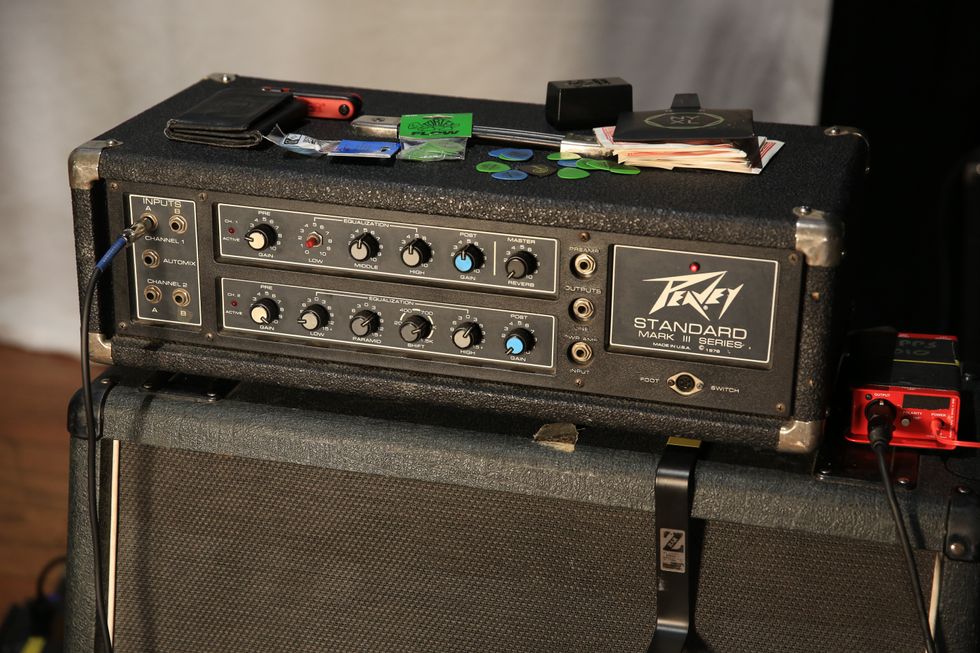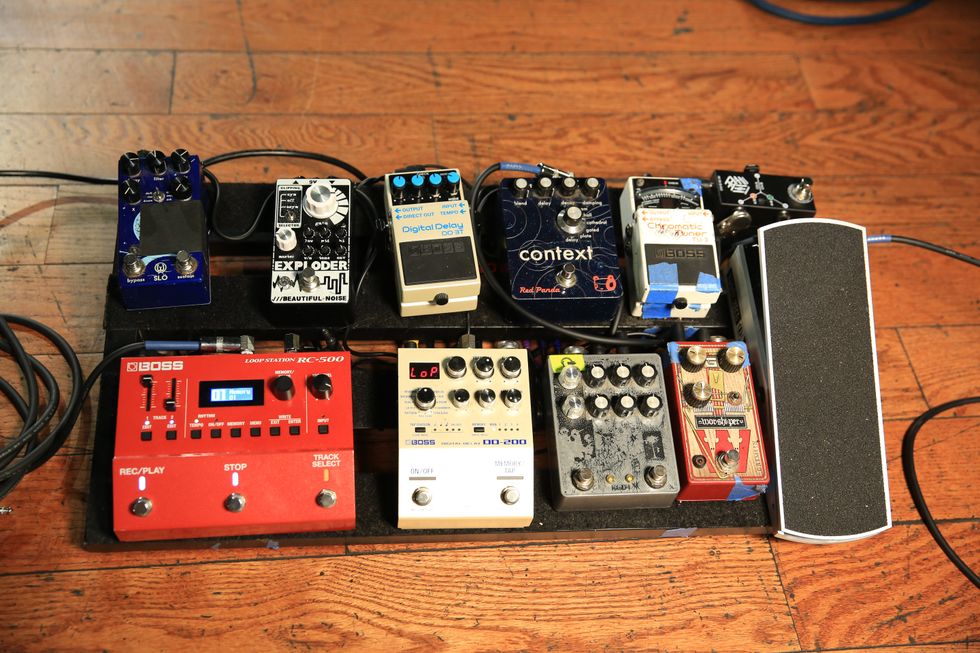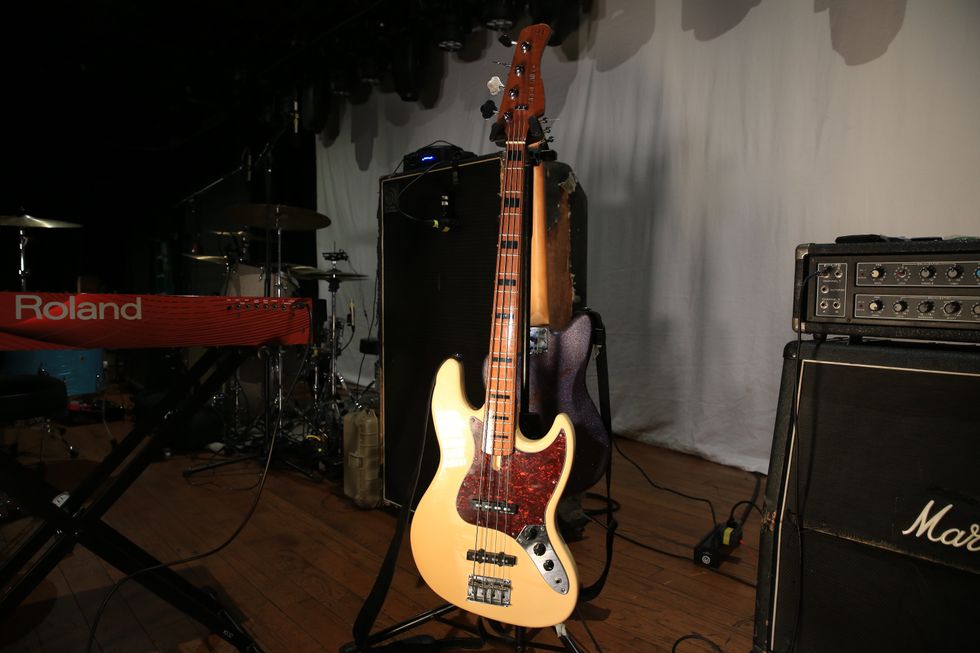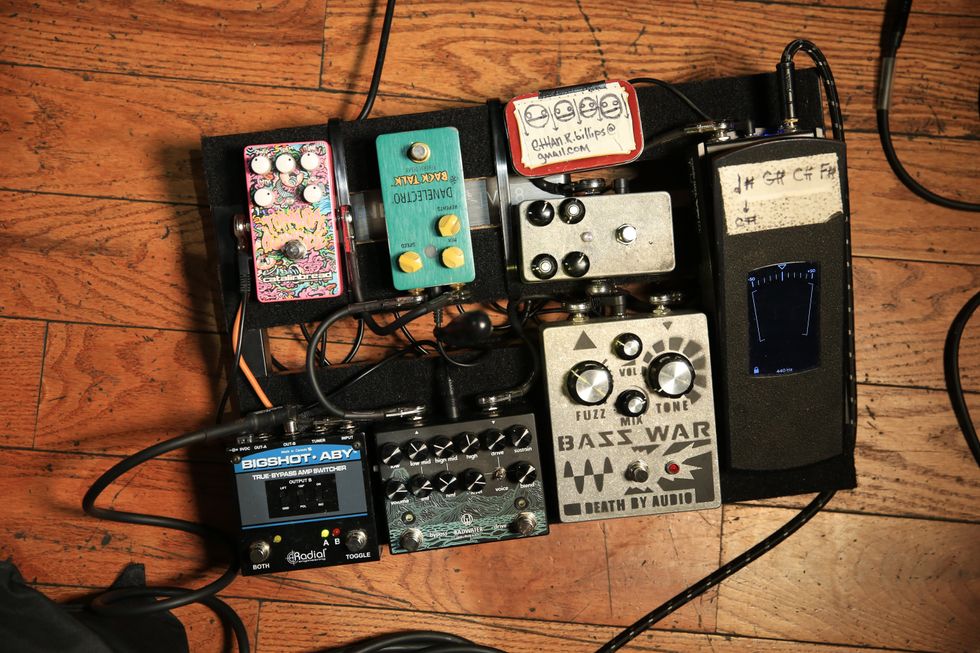While there are several stellar and very practical solid-state or digital modeling amp options on the market these days, there’s still nothing quite like the robust sound and dynamic response that a good bassist and a great tube amp can produce together. And for players who revel in that type of tube-driven glory, the 300-watt Verellen Meatsmoke head is one of the most compelling new bass amps to come along in the last couple of years.
Unfortunately, at $2,500, the Meatsmoke also commands a price as hefty as its tone—a price that puts it out of reach for most budget-conscious players. But with the recently released Meatsmoke pedal, Verellen has essentially taken the amp's entire preamp circuit and packed it into a stomp-able enclosure. That beefy Meatsmoke tone—from brawny, glassy cleans to articulate grind to savagely overdriven roar—can now be had for well under a grand.
Where There’s Smoke …
The Meatsmoke is built of thick, industrial-grade
steel and Baltic-birch side panels, and
that’s a good thing, because there’s a pair of
JJ 12AX7 preamp tubes to protect in there.
At more than 10" wide, the Meatsmoke
takes up more space than most effects, so
be prepared to shove a few stomps on your
pedalboard out of the way to make room.
The Meatsmoke’s top panel features a 3-band EQ, controls for gain and master volume, and a pair of footswitches—one for engaging the boost and a true-bypass one for the preamp. Around back, there’s also a ground-lift switch, a high/low toggle for setting the level of the non-filtered 1/4" output jack—low for use in front of an amp, or high for use with a power amp or in an amp’s effects return—and a dedicated 1/4" line-level output with speaker simulation. Personally, I would have preferred to see the latter as a balanced XLR jack to avoid hum and signal-degradation issues.
Slow-Roasted Tone
I tested the Meatsmoke with a Fender
American Jazz bass, a Gallien-Krueger
400RB head, and an Ampeg SVT-410HLF
cabinet. I started by setting the output
switch to low and routing the signal
through the G-K’s main input. This configuration
delivered an instantly noticeable
difference in the midrange and lows, with
deliciously pummeling clean tones and
a warm, dynamic response that’s rare to
encounter when tubes aren’t part of the
equation. And I could shape the tone in
ways well beyond what the amp’s controls
could do on their own.
The Meatsmoke’s EQ has a huge range, and even slight adjustments make a big difference. I didn’t need to stray too far from 12 o’clock settings to dial in a wide array of rock, jazz, and blues tones. Pushing midrange to about 1 o’clock gave the G-K a raunchy, punchy sound, and inching the bass knob higher expanded the amp’s lows considerably. However, the Meatsmoke’s treble voicing was less pronounced, so if I wanted a brighter, snappier tone—say, one more apt for slapping and popping—I had to go beyond 2 o’clock to get there.
Because the Meatsmoke is capable of delivering a lot of output—even with the output switch set to low—I had to be careful with volume and gain settings. Too much caused the G-K to fart out rather easily, especially under heavy attack. And sometimes when I engaged the boost— which delivers a huge jump in volume that’s, unfortunately, not adjustable—the amp had an even harder time discerning the lows from the mids, resulting in a garbled, muddy overdrive. Coincidentally, and by popular request, Verellen has announced that next-generation Meatsmoke pedals will feature independent, footswitchable channels for normal and boost, each with its own gain, EQ, and volume settings.
Ratings
Pros:
Adds tube warmth to stiff-sounding rigs. Superb overdrive. Tough construction. Gets very close to Meatsmoke amp tones for considerably less money.
Cons:
No XLR direct out. Needs careful tuning to sound full and detailed with some bass amps. No dedicated gain control for boost.
Tones:
Ease of Use:
Build/Design:
Value:
Street:
$699
Company
verellenamplifiers.com
As nice as the Meatsmoke’s tones were running through the amp’s input, the results were nothing short of amazing when I ran it through the effects return. Suddenly there were incredible details and harmonics in the rich, deep clean tones, and overdrive sounded gargantuan—with endlessly sustaining low end and sweet midrange when I engaged the gain boost.
I A/B’d this rig with a full-sized Meatsmoke amp and—other than the added presence and detail in the lows and highs from the Meatsmoke amp’s set of 6550 power tubes—the two setups sounded strikingly similar. The response was somewhat quicker through the solid-state G-K, but the overall tone was definitely in the same ballpark.
While the Meatsmoke pedal is designed primarily for bass, it provides great tones for guitar, too. Its EQ boosted a Gibson Les Paul Custom’s midrange and low end exceptionally well, and added a cool, gravelly texture to the highs. The Gibson’s hotter Tom Anderson pickups didn’t push the gain in the same grinding way as the Jazz bass, but they did yield a thick, glassy overdrive reminiscent of an old Sunn Model T or a Hiwatt.
The Verdict
With the Meatsmoke preamp, Verellen
Amplification has managed to stuff most of the
best traits of its beastly bigger brother into a
tough, compact package. It works very well as
a tone-shaping front-end tool, but really shows
off its abilities when used as a preamp paired
with a separate power amp. The only real bummer
is that the boost circuit would be more
practical with a dedicated gain control, but
with Verellen’s next incarnation of the pedal,
that should no longer be a gripe. The price
is rather steep, but when you consider how
similar its tones are to those from the stellar,
all-tube Meatsmoke head, it feels a little more
reasonable. All in all, pound for pound, it’s an
excellent tool for rock and metal players.








![Rig Rundown: AFI [2025]](https://www.premierguitar.com/media-library/youtube.jpg?id=62064741&width=1245&height=700&quality=70&coordinates=0%2C0%2C0%2C0)












 Shop Scott's Rig
Shop Scott's Rig